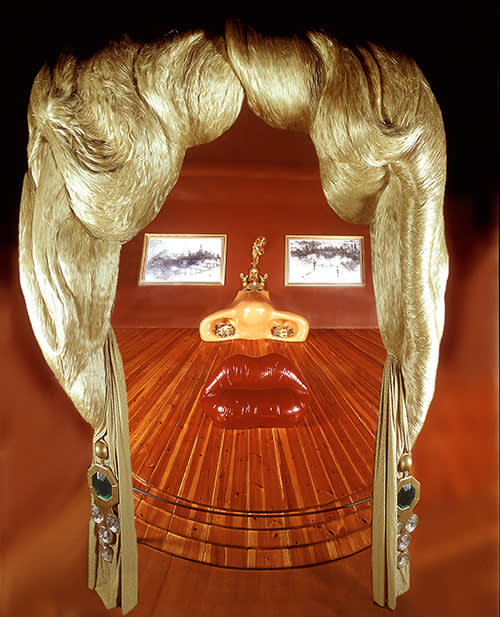
Salvador Dali
Mae West Room
Sigmund Freud once deduced that the dream image of a room was in the representation of a woman. Freud’s psychoanalytical teachings were key notions to the development of surrealist thought.
The foundations of Surrealism were not only rooted in the themes of imaginary, marvelous imagery, but in the world of illusionary reasoning. The surrealists regularly exploited imagery to challenge the mind through the art of visual paradox. Salvador Dalí, arguably the figurehead of the avant-garde cultural movement, repeatedly utilized common subject matter throughout his prolific oeuvre, including the regular use of symbolic and illusionary heads and faces.
Salvador Dali
Ant Face, 1936
Salvador Dali
Raphaelesque Head Exploding, 1951
Salvador Dali
Galatea of the Spheres, 1952
Salvador Dali
Naissance d'une Divinité, 1960
However much he strived towards the manipulation of traditional forms of being, Dalí believed that the feminine model of beauty was the depiction 1920s Hollywood film star and sex symbol, Mae West. In 1934, Dalí imbued his paranoiac artistic method to create a work using a newspaper photo of Mae West, in which he transformed her face into an apartment. In this realistic scene, West’s facial features become furniture and ornamental motives, creating a surrealist depiction of a room. Years later, Dalí used this collage as inspiration for the artist’s Mae West room, further developing the concept with Catalan architect and designer Òscar Tusquets.
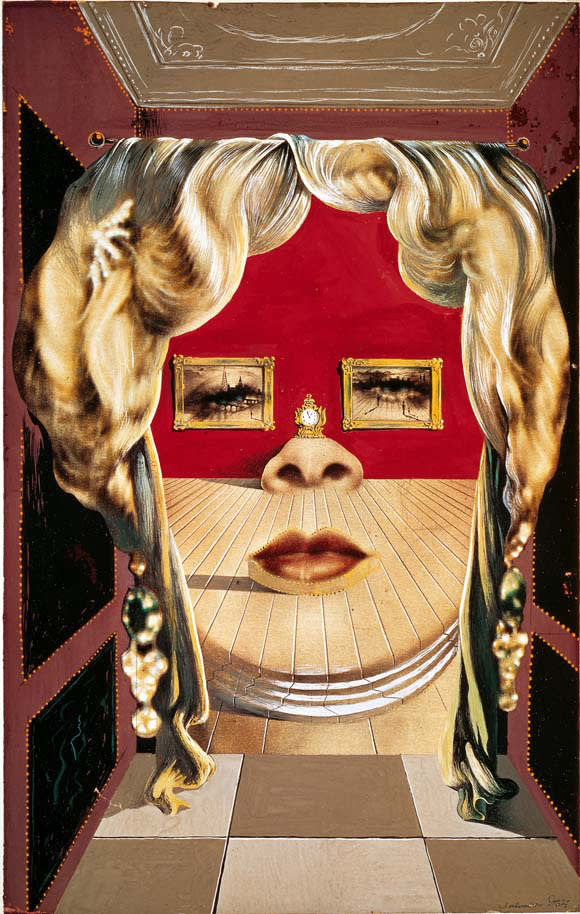
Salvador Dali
Mae West, 1934-35
In 1974, Dalí and Tusquets began extracting individual elements of the work to render the scene as a physical space, furthering the artist’s exploration of the paradoxical, spatial visage enveloped by furnishings; West’s lips were converted into a rosy love seat, her nose a chimney, abstract images to represent her eyes and a blonde wig to act as apartment curtains.
Mae West Room
Plan
Salvador Dalí
Mae West Room, 1975
The shape of the room’s lip sofa, arguably the most recognized individual element within the installation, was derived not only from Mae West’s lips, but also from the opulent, swelling curves of Gaudi architecture. Prior to developing the unique lip sofa for the Mae West room, Dalí worked with French architect Jean-Michel Frank in the 1937 on the design of a lip couch, also inspired by West, made of wood and satin. Several of these sofas were fabricated according to Dalí’s original design, including one in the exact shade of Elsa Schiaparelli’s ‘shocking pink’ lipstick, with whom Dalí worked closely on a number of projects throughout the 1930s.
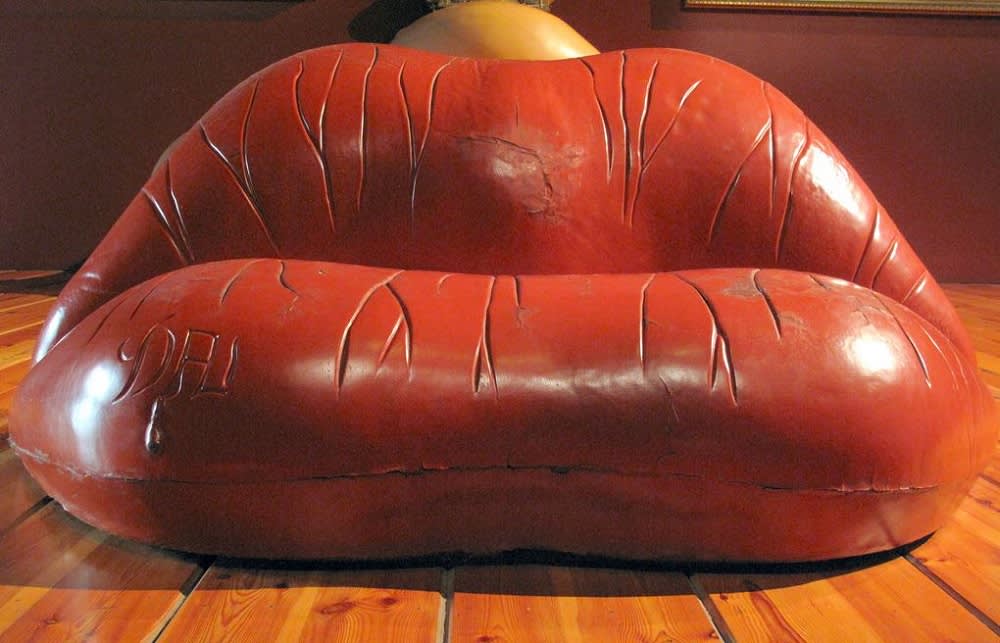
Salvador Dali
Lip Sofa, 1975
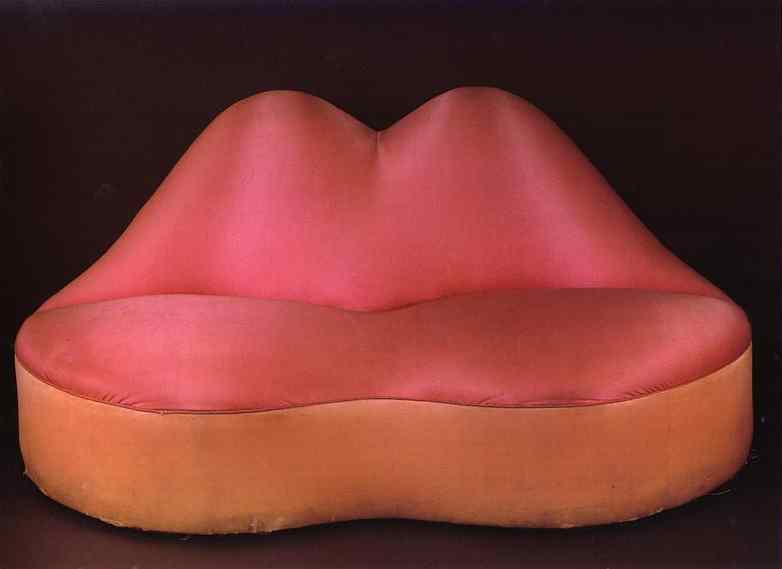
Salvador Dali and Jean-Michel Frank
Lip Couch, 1937
While West’s eyes are rendered on two identically sized landscape depictions on canvas, hanging on room’s principal wall, the actress’ nose is portrayed through a commanding fireplace, with two principal areas for wood at the base of each nostril. West’s hair is represented by a large wig at the ‘would be’ entry point of the face-interior, framing the space like blonde curtains. Dalí worked with hairdresser-cum-sculptor Lluís Llongueras to fabricate the large wig, which, at the time of completion in 1976, was entered in the Guinness Book of Records as the largest wig made to date.
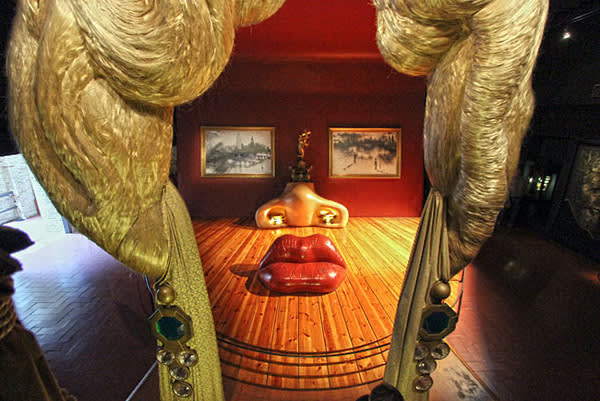
Mae West Room
At the Dalí Theatre-Museum, Spain

Mae West Room
At the Dalí Theatre-Museum, Spain
Mae West Room
At the Dalí Theatre-Museum, Spain
Today, the Mae West room is housed at the Dalí Theatre-Museum in Spain, serving amongst the institutions most prized works, and one of the museum’s foremost zones embodying the artist’s expansive career across a variety of media.


